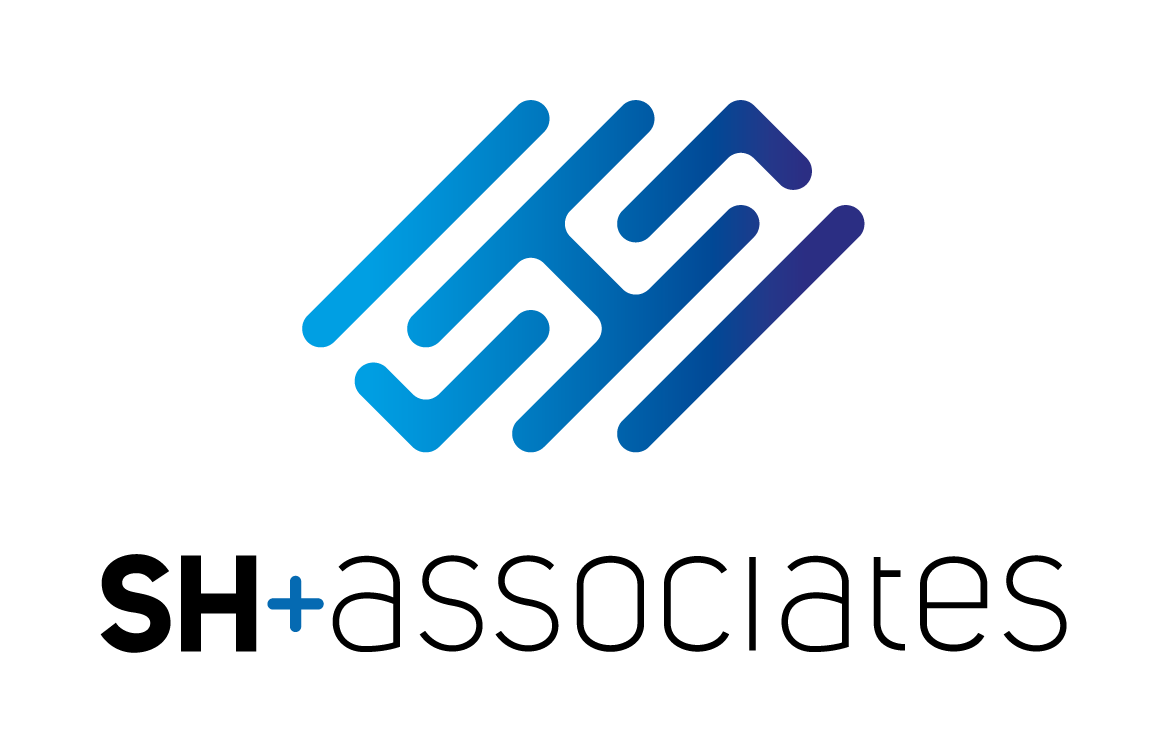Blog Post
Building Your 2025 IT Roadmap
by: Simon Hughes
date: Thursday, Jan 30, 2025
category:
Fractional CTO
Tech
Trends
2025
Tech Strategy Guide: Building Your 2025 IT Roadmap
Planning your IT strategy for 2025 is essential to stay competitive in a rapidly evolving tech landscape. This guide breaks down how to align technology investments with business goals, prioritize key areas like cybersecurity, AI, and cloud, and avoid costly disruptions. Here’s what you’ll learn:
-
Key Focus Areas: Cybersecurity, generative AI, and multicloud adoption.
-
Steps to Build an IT Roadmap: Assess current systems, set priorities, and track progress.
-
Benefits of a Fractional CTO: Cost-effective, high-level tech leadership for businesses of all sizes.
Quick Tip: Only 48% of digital initiatives meet their targets - having a clear roadmap improves your chances of success.
This guide provides actionable strategies to help you create a roadmap that drives measurable results and ensures your IT systems support your business goals.
The Role of a Fractional CTO in IT Planning
By 2025, more businesses are turning to Fractional CTOs to gain high-level tech leadership without the expense of a full-time hire. This approach allows companies to develop solid IT strategies while benefiting from senior expertise on a part-time basis.
What Does a Fractional CTO Do?
A Fractional CTO offers part-time technology leadership, focusing on strategy rather than daily operations. Here's what they typically handle:
| Responsibility | Impact |
|---|---|
| Strategy & Assessment | Aligns technology with business goals and ensures smart investments. |
| Risk & Security | Safeguards operations with proactive system management. |
| Team Leadership | Boosts team efficiency through mentoring and implementing best practices. |
Why Small Businesses Benefit from a Fractional CTO
For smaller businesses, a Fractional CTO provides strategic leadership without the financial burden of a full-time executive. Here's how they help:
- Flexible expertise that adapts to various industries and tech needs.
- Objective advice from an external perspective.
- Tailored guidance that matches the company's size and growth stage.
When Should You Hire a Fractional CTO?
Consider hiring a Fractional CTO in situations like these:
- You're planning significant system upgrades or moving to the cloud.
- You need a clear IT roadmap for the year ahead.
- Your technical team is growing, and you need to establish efficient processes.
“Fractional CTOs turn business goals into actionable tech strategies that fuel growth.” - Simon Hughes, Founder of SH + Associates
Engagement Recommendations
Here’s how the time commitment might look based on your business stage:
| Business Stage | Focus | Time Investment |
|---|---|---|
| Startup | Architecture guidance | 2-3 days per month |
| Growth | Process optimization | 3-4 days per month |
| Enterprise | Digital transformation | Custom engagement |
Core Components of a 2025 IT Roadmap
Planning for Long-Term Growth
Creating a solid IT infrastructure requires balancing immediate priorities with future goals. Considering that only 48% of digital initiatives succeed, thorough long-term planning can significantly improve these outcomes.
IT planning typically revolves around three key timelines:
| Timeline | Focus Area |
|---|---|
| Short-term (0-6 months) | Infrastructure improvements |
| Mid-term (6-18 months) | Process alignment |
| Long-term (18+ months) | Advancing innovation |
Once a strong foundation is established, the focus shifts to adopting technologies like AI and cloud to drive progress.
Investing in AI and Cloud Technology
AI and cloud solutions are now at the core of modern IT systems. A step-by-step approach to their adoption - evaluating existing systems, starting with less critical applications, and gradually integrating AI-powered tools - helps reduce disruptions while boosting efficiency.
However, as organizations embrace these technologies, managing potential risks becomes essential for smooth operations.
Managing Risks and Avoiding Disruptions
A comprehensive IT roadmap must include strategies to handle risks and maintain uninterrupted operations. In 2025's digital environment, prioritizing security is non-negotiable.
Here are some effective risk management approaches:
| Risk Area | Mitigation Strategy | Implementation Focus |
|---|---|---|
| Cybersecurity | Real-time threat detection with automated alerts | Swift response to threats |
| Data Management | Routine audits to ensure privacy and compliance | Ongoing compliance checks |
| System Reliability | Backup systems and failover mechanisms | Ensuring business continuity |
Proactive Problem Management (PPM) is another critical element. By identifying and addressing potential issues before they escalate, PPM strengthens system stability and ensures smoother day-to-day operations. This method, integrated into IT Service Management frameworks, supports long-term reliability.
Steps to Build Your IT Roadmap
Reviewing Your Current IT Systems
Start by taking stock of your current IT setup. Document the systems you use, evaluate their performance, and identify any security gaps. Use inventory tools to get a clear picture of your infrastructure.
Here are some key areas to focus on:
| Assessment Area | Key Considerations | Priority Level |
|---|---|---|
| Systems Health | Hardware age, scalability, version status, integration | Critical |
| Security Measures | Vulnerability gaps, compliance status | Critical |
| User Experience | System performance, feedback analysis | Medium |
Once you have a solid understanding of your systems, you can move on to prioritizing investments that will deliver the most impact.
Setting Priorities for Investments
With global IT spending expected to hit $5.75 trillion by 2025 [1], planning how to allocate resources is more important than ever. Use a framework to evaluate investments based on urgency and potential benefits.
Here are some current investment priorities:
| Priority Area | Expected Impact | Implementation Timeline |
|---|---|---|
| Cybersecurity | Risk reduction, compliance | Immediate (0-3 months) |
| Gen AI Integration | Operational efficiency | Short-term (3-6 months) |
| Data Analytics | Decision support | Mid-term (6-12 months) |
After setting your priorities, the next step is to develop a detailed plan and ensure you’re tracking progress effectively.
Developing and Tracking Your Roadmap
Lay out a clear implementation plan with defined milestones and measurable goals. Review your roadmap monthly to monitor progress, adjust for any changes, and stay aligned with your strategy.
Use tools like FinOps for financial tracking and set up regular stakeholder reviews. For multicloud environments, create cost and performance optimization protocols. Bringing in a Fractional CTO can also help provide strategic guidance and ensure your goals stay on track.
“Over 80% of CIOs will prioritize investments in cybersecurity, Gen AI, and data analytics by 2025” [1]
Conclusion: Why a 2025 IT Roadmap is Essential
Key Takeaways from This Guide
In today’s fast-changing tech world, having a clear IT roadmap is crucial for staying ahead. Businesses that actively plan their IT strategies tend to lead the pack. The most forward-thinking organizations are focusing on three main areas: cybersecurity, generative AI, and data analytics - technologies that are reshaping industries as we approach 2025.
“In 2025, security-first software engineering is the standard, and if you're not building with security in mind from the start, you're playing with fire.”
By prioritizing these areas and seeking expert advice, companies can set themselves up for success.
How a Fractional CTO Can Help
A Fractional CTO offers the kind of strategic leadership that turns ideas into actionable results. They specialize in areas like security-first development, technology integration, and risk management, while ensuring your IT investments align with your business goals. This is especially beneficial for small and mid-sized businesses that want high-level expertise without the cost of a full-time executive.
With their guidance, you can move beyond simply planning your IT roadmap to actually achieving measurable results.
Getting Started with Your IT Roadmap
Turn your technology goals into reality by setting clear milestones and realistic timelines. Focus on creating specific, measurable objectives that align with your business priorities. Regularly review your progress to stay on track. Partnering with experienced consultants can provide the insights needed to navigate the challenges of 2025’s tech environment.
A strong IT roadmap connects your technology strategy to your business success. By starting with clear goals, tapping into expert advice when needed, and staying adaptable, your organization can thrive in 2025 and beyond. </
FAQs
Why hire a fractional CTO?
A fractional CTO offers strategic leadership tailored to your IT needs, making them a smart choice for shaping your 2025 IT strategy. Let’s break down the advantages:
| Benefit | Description | Business Impact |
|---|---|---|
| Cost Efficiency | Pay only for the services you need, avoiding full-time salaries and benefits | Save 40-60% compared to hiring a full-time executive |
| Strategic Expertise | Gain access to high-level technology planning and guidance | Accelerate adoption of AI and cloud technologies |
| Flexibility | Engage on a part-time basis, adjusting as your needs evolve | Scale support up or down based on demand |
| Risk Management | Expert oversight of technology investments | Avoid delays, security issues, and costly mistakes |
When choosing a fractional CTO for your 2025 IT roadmap, prioritize candidates with a track record in strategic planning, deep knowledge of technologies like AI and cloud computing, and excellent communication skills. Their expertise is especially helpful for:
- Steering AI and cloud adoption plans
- Building strong cybersecurity measures
- Streamlining multicloud environments
- Staying compliant with changing regulations
- Managing technology-related risks effectively
Related Blog Posts

08 Jan
2025 Technology Trends Every SME Should Know
2025 Technology Trends Every SME Should Know Small and medium-sized enterprises (SMEs) must stay ahead in a fast-changing digital world. Key trends like AI, cloud solutions, and cybersecurity are no longer optional - they're essential for growth, efficiency, and survival. Here’s what you need to know: AI Tools: Automate customer support, improve inventory management, and personalize marketing. Cloud Solutions: Enable flexible work, scale operations, and secure data with pay-as-you-go pricing.
Read More
16 Dec
8 Common Tech Stack Mistakes SMEs Make
8 Common Tech Stack Mistakes SMEs Make (And Solutions) Most SMEs struggle with tech stack issues that waste time, money, and resources. From using too many tools to skipping team training, these mistakes can hurt efficiency, security, and growth. Here’s a quick overview of the most common problems and how to solve them: No Clear Plan for Technology: Random tool adoption leads to inefficiencies. Solution: Create a strategic plan aligned with business goals.
Read More
05 Dec
7 Signs Your Business Needs a Fractional CTO in 2025
Does your business struggle with technology planning, scaling operations, or keeping up with new tech trends? A Fractional CTO might be the solution.
A Fractional CTO provides part-time, high-level technical expertise, helping businesses tackle challenges like digital transformation, cybersecurity, and scaling infrastructure—without the cost of a full-time hire. Here’s a quick rundown of when you might need one:
Read More